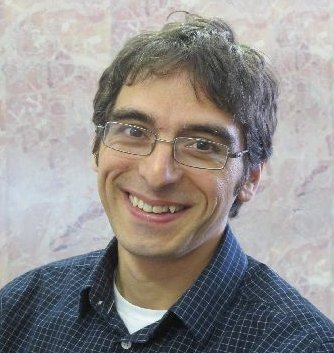Statistical Physics Can Help Uncover the Impact of Media on Decision Making

Students and researchers from HSE University and the Landau Institute for Theoretical Physics have examined the widely known ‘Prisoner’s Dilemma’ game using methods from statistical physics. They used the mean-field concept, a common tool for studying the physics of many-particle systems, to describe human decision-making processes. Researchers suggest that this model may be helpful for understanding systems with many participants. The results of the study are published in the September issue of the Physics Review Research journal.
The paper’s authors looked at the spatial variation of the ‘Prisoner’s Dilemma’ game—the Nowak-May game—from a new perspective. In particular, they included statistical physics methods in the game’s rules. ‘In the classic version of the dilemma, there are two “players.” We used a modified version with a large number of agents,’ said Lev Shchur, Professor, Department Head and Chief Research Fellow at MIEM HSE.
The game is played with participants’ ‘nearest neighbours’, just like communicating with family and co-workers in real life. The players’ individual opinions sum up to a kind of average opinion, which in the suggested model directly impacts the decisions made by the players. Then an individual’s behaviour is determined by this ‘mean-field,’ formed by the behaviour of all individuals in the population. This construction is successfully used in statistical physics, which studies the emergent behaviour of large numbers of interacting particles.
The main feature of the model is that it considers both the structure of the population and the mean-field impact. The authors believe that the model might play a key role in the study of social systems. For example, in the paper, the presence of a mean-field is interpreted as the media’s impact on personal decisions, something that previous models of this kind haven’t considered.
It has been established that the spatial version of the Prisoner’s Dilemma game features sharp transitions between different steady states. The authors find that the new approach allows for a smoothening of these transitions. This is the first indication of the co-existence of two types of transitions—sharp and smooth—in deterministic systems.
The scholars believe that this model may help understand how systems with large numbers of participants behave or how the media impacts individual choices.

Evgeni Burovski, Associate Professor at the HSE School of Applied Mathematics
We have obtained some exciting results. In classical evolutionary game models, Darwinian processes are described in terms of well-mixed populations, and the information on the structure of the population is lost. We are suggesting an alternative approach — games both with a local neighbourhood and the self-consistent mean-field opinion. This approach helps consider the impact on decision making that the closest environment (colleagues and friends) has, as well as the things that people hear or read in the news.
The suggested approach can be applied to a broad class of spatial evolutionary games with both deterministic and stochastic rules. Given the interdisciplinary nature of the study, the researchers hope to collaborate with their colleagues working in sociology and economics to further develop and apply the model in trials.
Evgeny Burovskiy
Associate Professor, School of Applied Mathematics
Lev Shchur
Chief Research Fellow, Laboratory of the Internet of Things and Cyber-physical Systems
See also:
Physicists at HSE University Reveal How Vortices Behave in Two-Dimensional Turbulence
Researchers from the Landau Institute for Theoretical Physics of the Russian Academy of Sciences and the HSE University's Faculty of Physics have discovered how external forces affect the behaviour of turbulent flows. The scientists showed that even a small external torque can stabilise the system and extend the lifetime of large vortices. These findings may improve the accuracy of models of atmospheric and oceanic circulation. The paper has been published in Physics of Fluids.
New Method for Describing Graphene Simplifies Analysis of Nanomaterials
An international team, including scientists from HSE University, has proposed a new mathematical method to analyse the structure of graphene. The scientists demonstrated that the characteristics of a graphene lattice can be represented using a three-step random walk model of a particle. This approach allows the lattice to be described more quickly and without cumbersome calculations. The study has been published in Journal of Physics A: Mathematical and Theoretical.
‘It Was Interesting to See How Our Chinese Colleagues Work’: HSE Researchers Take Part in Hefei Summer School
This summer, Diana Sukhoverkhova, Daria Mazur, and David Kagramanyan, research assistants at the MIEM HSE Laboratory for Computational Physics, spent five weeks in China. At the Future Scientist Exchange Program (FuSEP) summer school in Hefei, they worked in new fields of science together with their Chinese colleagues. HSE's promising scientists spoke to the HSE News Service about their intense and productive time in China.
‘The Fundamental Principle of Scientific Knowledge Is Honesty’
Daria Mazur has wanted to pursue science since she was 13 years old—ever since she discovered in the seventh grade that she was good at physics. In an interview for the HSE Young Scientists project, she spoke about her theoretical research on the electric double layer, speed reading, and the MGMT song ‘Little Dark Age.’
Russian Scientists Reconstruct Dynamics of Brain Neuron Model Using Neural Network
Researchers from HSE University in Nizhny Novgorod have shown that a neural network can reconstruct the dynamics of a brain neuron model using just a single set of measurements, such as recordings of its electrical activity. The developed neural network was trained to reconstruct the system's full dynamics and predict its behaviour under changing conditions. This method enables the investigation of complex biological processes, even when not all necessary measurements are available. The study has been published in Chaos, Solitons & Fractals.
Russian Physicists Discover Method to Increase Number of Atoms in Quantum Sensors
Physicists from the Institute of Spectroscopy of the Russian Academy of Sciences and HSE University have successfully trapped rubidium-87 atoms for over four seconds. Their method can help improve the accuracy of quantum sensors, where both the number of trapped atoms and the trapping time are crucial. Such quantum systems are used to study dark matter, refine navigation systems, and aid in mineral exploration. The study findings have been published in the Journal of Experimental and Theoretical Physics Letters.
Russian Scientists Demonstrate How Disorder Contributes to Emergence of Unusual Superconductivity
Researchers at HSE University and MIPT have investigated how the composition of electrons in a superconductor influences the emergence of intertype superconductivity—a unique state in which superconductors display unusual properties. It was previously believed that intertype superconductivity occurs only in materials with minimal impurities. However, the scientists discovered that the region of intertype superconductivity not only persists but can also expand in materials with a high concentration of impurities and defects. In the future, these superconductors could contribute to the development of highly sensitive sensors and detectors. The study has been published in Frontiers of Physics.
Scientists at HSE University Devise More Accurate Method for Predicting the Electrical Conductivity of Electrolyte Solutions
Researchers at HSE MIEM have developed a model for calculating the electrical conductivity of aqueous electrolyte solutions; for the first time, it considers the spatial distribution of ion charges instead of assuming their localisation at a single point. The model remains effective even at high electrolyte concentrations and across a wide temperature range. This breakthrough will contribute to the development of more efficient batteries and enable the calculation of electrical conductivity without the need for experimental testing. The study has been published in the Journal of Chemical Physics.
Russian Scientists Integrate Microdisk Laser and Waveguide on a Single Substrate
A group of Russian scientists led by Professor Natalia Kryzhanovskaya at HSE Campus in St Petersburg has been researching microdisk lasers with an active region based on arsenide quantum dots. For the first time, researchers have successfully developed a microdisk laser coupled with an optical waveguide and a photodetector on a single substrate. This design enables the implementation of a basic photonic circuit on the same substrate as the radiation source (microlaser). In the future, this will help speed up data transfer and reduce equipment weight without compromising quality. The study results have been published in Semiconductors.
First Successful Attempt in 55 years: Physicists in Russia and Germany Confirm 1969 Experiment Results
A team of researchers, with the participation of physicists from HSE University, replicated the 1969 experiment on superconductivity and its properties. The scientists induced superconductivity by deliberately deteriorating the interfaces between the layers of superconductors and ferromagnets in the system, resulting in better performance of spin valves compared to the classical version, where the interfaces between the layers are ideal. This approach could lead to the development of more efficient devices for data storage and computing. The study findings have been published in the Beilstein Journal of Nanotechnology.


